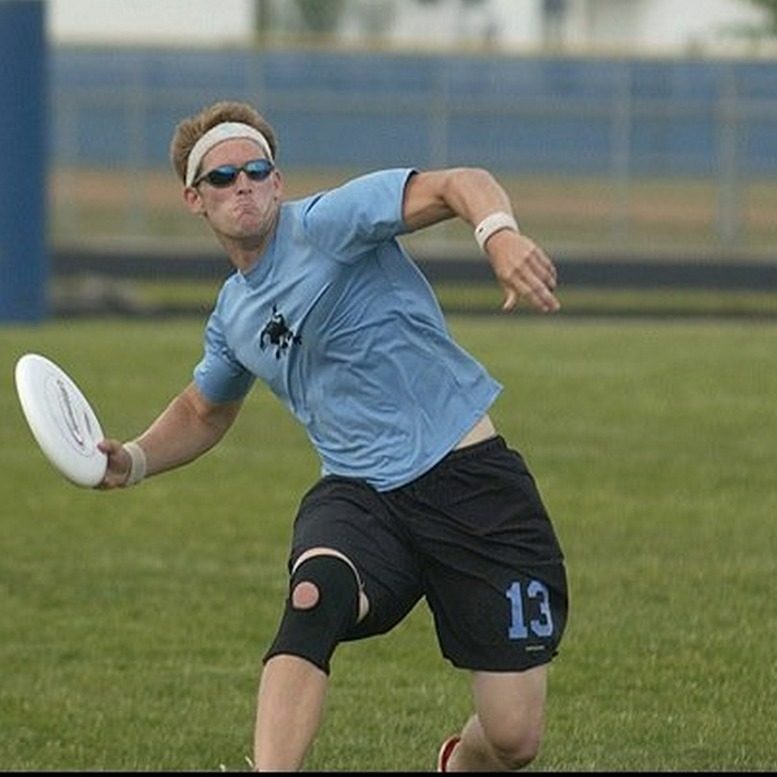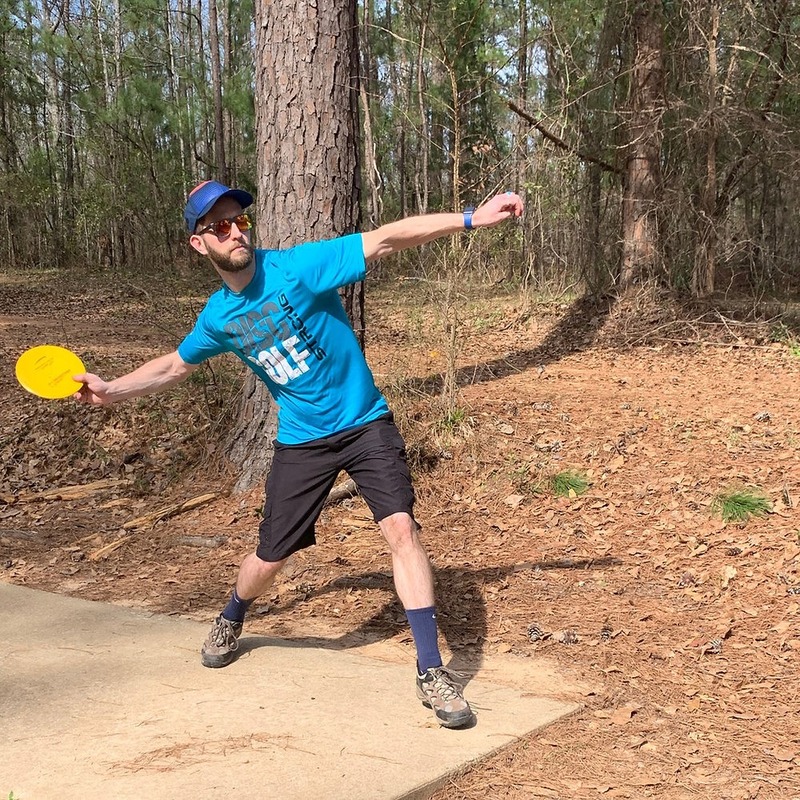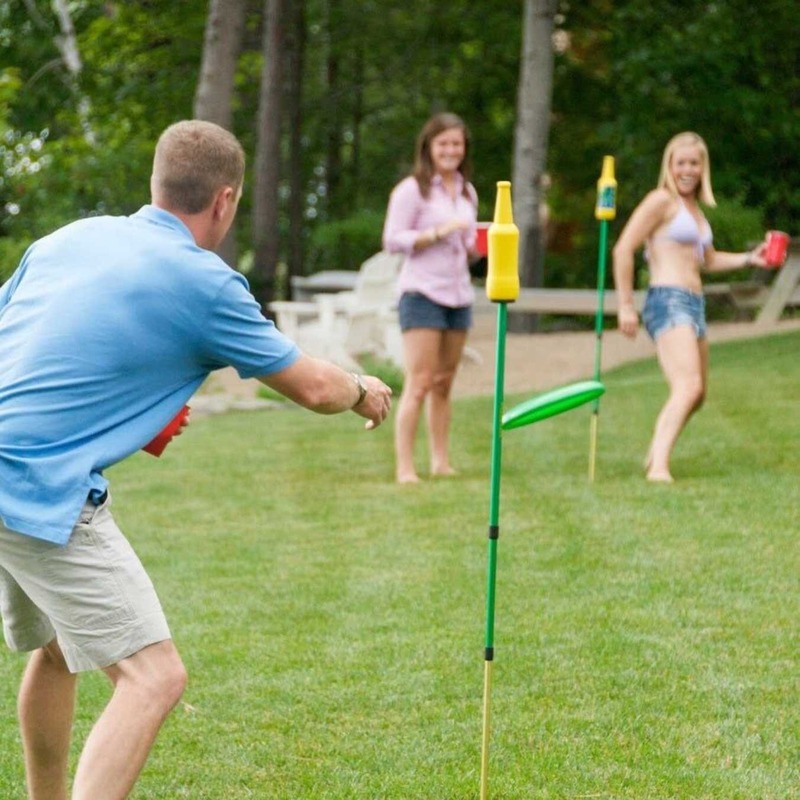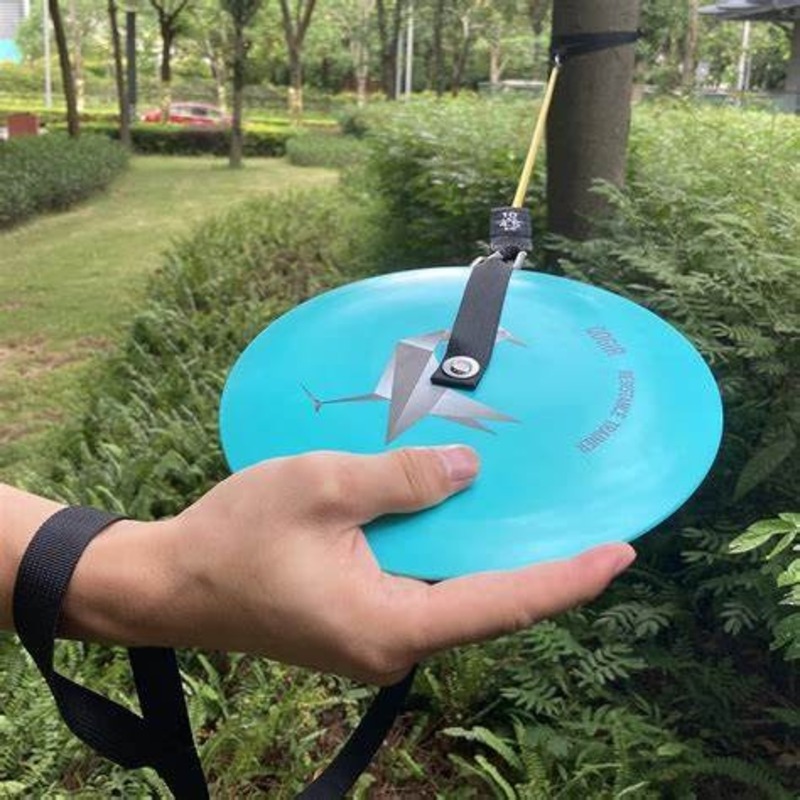The Fundamentals of Forehand Frisbee Throwing
Mastering the forehand frisbee throw is crucial for any player. It begins with understanding the basic mechanics. A solid forehand throw relies on grip, stance, and motion. Each part must work together to create a fluid, controlled throw. Here, we break down these fundamentals. First, the grip is the starting point. Secure the frisbee between your thumb and fingers. For most, this means using the index and middle fingers underneath the disc. The thumb stays on top, pressing down gently.
Next, consider your stance. Stand sideways relative to your target. This allows you to align your shoulders and hips for the throw. Place your feet shoulder-width apart, knees slightly bent. This gives you stability. For the motion, keep it smooth. Use your wrist and forearm to generate spin. The elbow leads while the wrist snaps at the end of the motion. This spin stabilizes the frisbee in flight. Keep these basics in mind to lay the groundwork for a strong forehand frisbee throw.
Essential Grips for a Powerful Forehand Throw
Choosing the right grip can make or break your forehand frisbee throw. A good grip enhances both power and accuracy. Below are the two most common grips used by players.
The Power Grip
To execute a power grip, place your middle and ring fingers tightly under the rim of the disc. Your index finger should be positioned slightly inside the edge, offering control without sacrificing power. Ensure your thumb is flat on top, providing steady pressure. This grip allows for maximum rotation speed, a key factor in a powerful throw.
The Fan Grip
Alternatively, the fan grip spreads your fingers out underneath the disc. Your thumb still rests on top, maintaining control. This grip is better for those requiring more finesse and control, especially in windy conditions. The spread of the fingers increases the contact surface, which can lead to a smoother release.
Using these grips effectively requires practice. The goal is to find a balance between force and precision. Experiment with both grips to discover which feels more natural. A well-mastered grip will contribute significantly to the effectiveness and consistency of your forehand frisbee throws.

Stance and Footwork: Key Elements for Stability
Proper stance and footwork are vital in executing a strong forehand frisbee throw. Establishing a stable base is the foundation for all movements in the throw. Here’s how to perfect your stance and footwork for better stability.
- Square Your Shoulders: Line up your shoulders parallel with your target. This helps maintain balance and provides direction for your throw.
- Position Your Feet: Place your feet shoulder-width apart. Have one foot slightly ahead of the other for a balanced posture.
- Bend Your Knees: Keep your knees slightly bent to lower your center of gravity. This makes it easier to move and adjust your balance.
- Weight Distribution: Start with your weight on the balls of your feet. As you initiate the throw, shift your weight from your back foot to your front foot.
- Footwork Practice: Practice stepping into your throws. This reinforces muscle memory and improves coordination.
- Stay Agile: Keep your feet light and ready to move. This agility allows you to adjust quickly to different throwing situations.
Remember, your stance and footwork should not feel stiff or forced. They should allow for a natural, fluid motion as you execute your forehand frisbee throw. Frequent practice will help you internalize these movements, leading to a more stable and effective throw.
The Wind-Up: Generating Momentum for Your Throw
Proper wind-up is critical for a powerful forehand frisbee throw. It builds the momentum needed to propel the disc. Start by facing your target sideways. Keep your elbow close to your body, your forearm back, and your wrist cocked. This creates potential energy. As you begin the throw, rotate your hips. The motion should come from your core, not just your arm. Hips lead, shoulders follow, then comes the elbow, and finally, the wrist snaps forward. This sequence taps into your body’s full kinetic chain, boosting the power of your forehand frisbee throw.
For effective wind-up, stay relaxed. Tension in your muscles will hinder the smooth transfer of energy. Take a deep breath before you begin your motion. Stay focused on fluid movement. This will translate to a dynamic release with increased velocity.
Remember, repetition is key. The more you practice the wind-up, the more natural it will feel. Work on making the motion second nature. Then, the forehand frisbee throw will fire off with speed and precision, every time. Practice and patience are your allies in mastering this part of the forehand frisbee throw.

Release Point and Angle: Perfecting the Flight Path
Perfecting the release point and angle can dramatically improve your forehand frisbee throw. The flight path of the frisbee is largely dependent on these two elements. Let’s break down how you can master both.
- Find the Sweet Spot: Your release point is the ‘sweet spot’ where you let go of the frisbee. Finding this requires practice. Aim to release the disc at a consistent point in your throwing motion.
- Keep It Level: Release the frisbee at a level height relative to your body. This helps maintain a flat trajectory and reduces the risk of the disc veering off course.
- Work on Angle Consistency: The angle of release—or ‘hyzer’—is crucial. For a straight throw, the frisbee should be released with a slight edge down towards your body. For a more advanced curved flight path, adjust the angle accordingly.
- Avoid Roll: Ensure the disc doesn’t roll off your fingers upon release. A clean release helps prevent unwanted spins that can affect the flight path.
- Practice Throwing into the Wind: Wind can greatly affect the frisbee’s angle. Practice throwing against the wind to learn how to adjust your release point and angle for better control.
Remember, fine-tuning your release requires attention to detail and repetition. Work these tips into your practice routine to see a noticeable improvement in your throws. The goal is a forehand frisbee throw that’s both powerful and precise, nailing your intended flight path every time.
Common Mistakes and How to Avoid Them
Even experienced players can make mistakes when executing a forehand frisbee throw. Identifying these errors is the first step towards improvement. Below are some common missteps to watch out for and tips on how to avoid them.
- Poor Grip Technique: Not using the correct grip can lead to a lack of control and power. Practice both the power grip and the fan grip until you’re comfortable.
- Incorrect Stance: An imbalanced stance leads to an unstable throw. Make sure to keep your shoulders squared and feet positioned correctly as per your training.
- Overlooking the Wind-Up: Skipping the wind-up phase reduces the force behind your throw. Always remember to wind up with controlled motion to build momentum.
- Inconsistent Release Point: Releasing the disc at varying points creates unpredictable flight paths. Strive for a consistent release point by practicing your motion.
- Neglecting Angle and Spin: The wrong release angle can send the frisbee off course. Work on maintaining the correct hyzer and applying consistent spin.
- Insufficient Practice: Technique can only improve with regular practice. Commit to a routine that includes drills targeting different areas of the forehand throw.
Avoid these common mistakes with consistent practice and a focus on fundamentals. Fine-tune your technique to see a marked improvement in your forehand frisbee throw performace. Remember, mastery comes with patience and perseverance.

Practice Drills to Enhance Your Forehand Throw
Improving your forehand frisbee throw demands targeted practice drills. Here are essential exercises to elevate your technique:
- Repetitive Throwing: Consistency is critical. Repeatedly throw towards a specific target. Aim for precision and power with each throw.
- Wrist Flicks: Focus on your wrist motion. Stand still and practice flicking the wrist to spin the frisbee. This strengthens wrist muscles and improves spin control.
- Stance Drills: Work on your footwork without a frisbee. Assume your throwing stance and shuffle side to side. This enhances your balance and stability.
- Marked Distance: Set up markers at various distances. Practice throwing to each marker. Judge your power and learn distance control with this drill.
- Throwing Under Pressure: Simulate game scenarios. Have a friend act as a defender while you practice your throws. This helps with focus and accuracy under pressure.
- Alternate Grip Throws: Switch between the power and fan grips during practice. This develops versatility and adaptability in your grip selection.
- Wind Condition Practice: Throw in different wind conditions. Learn to adjust your wind-up, grip, and release point for better control.
Incorporating these drills into your routine will sharpen your skills. Combine them with regular strength and flexibility training for the best results. Devote time to practice, and watch your forehand frisbee throws become more powerful and precise.
Advanced Techniques to Elevate Your Game
To take your forehand frisbee throw to the next level, consider these advanced techniques:
- Snap Your Wrist: Work on snapping your wrist as you release the disc. A sharp flick adds more spin and speed, increasing distance and stability in the air.
- Use of Shoulders: Incorporate your shoulders into the throw more actively. Rotate them swiftly as part of the motion. This adds extra force without overexerting your arm.
- Honing Body Coordination: Synchronize your hip rotation with your arm movement. A cohesive body motion ensures kinetic energy flows smoothly throughout your throw.
- Accuracy Training: Set up targets at different angles. Practice hitting them with various hyzer angles. This refines your accuracy and muscle memory for those angles.
- Disc Selection: Use different types of frisbees. Each has unique flight characteristics. Learning how each responds helps tailor your throw to the frisbee.
- Mental Visualization: Before your throw, visualize the perfect motion and flight path. This mental practice can enhance your physical execution.
- Plyometric Exercises: Include plyometrics in your training. Jumping exercises build leg strength, adding power to your throw from the ground up.
Combine these techniques with the fundamentals you’ve mastered. With dedication and smart practice, your forehand frisbee throw will impress on any field.
